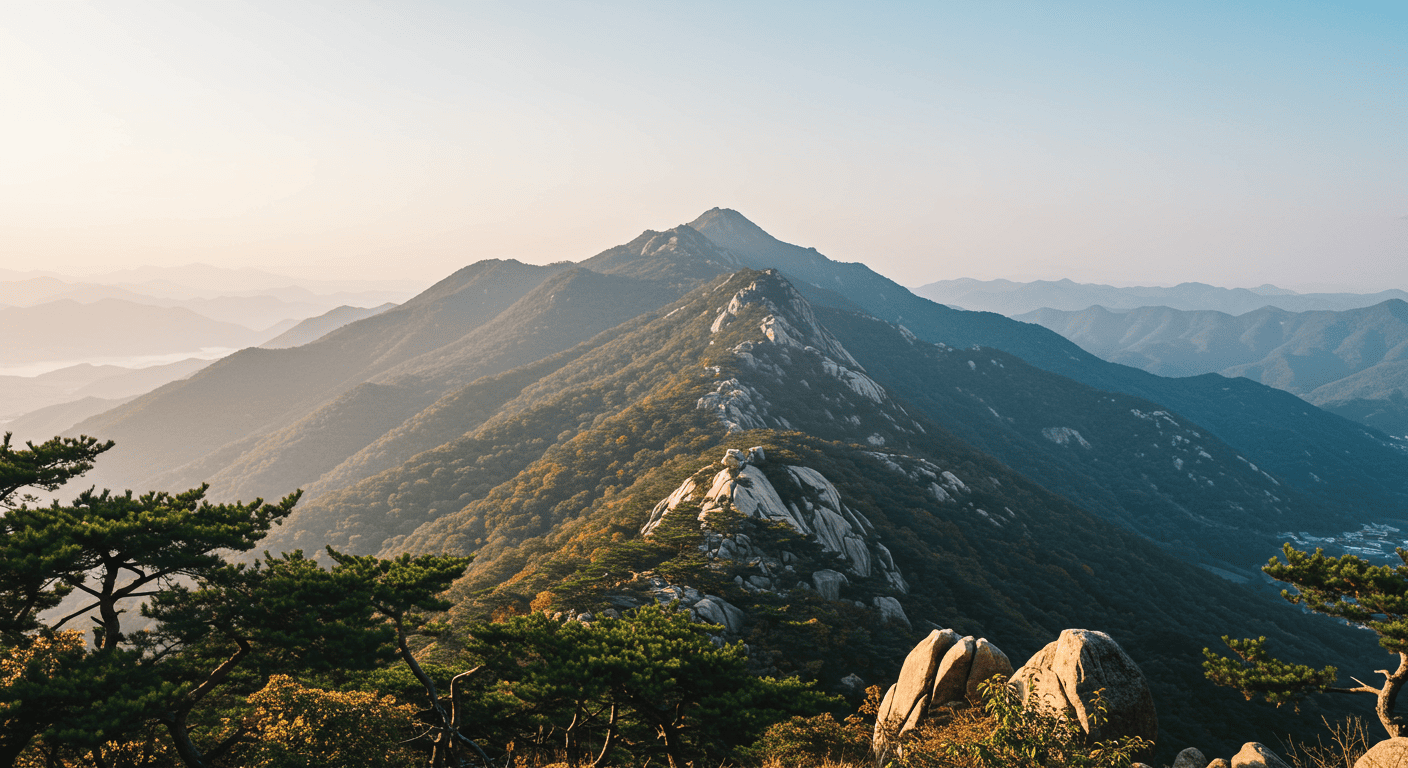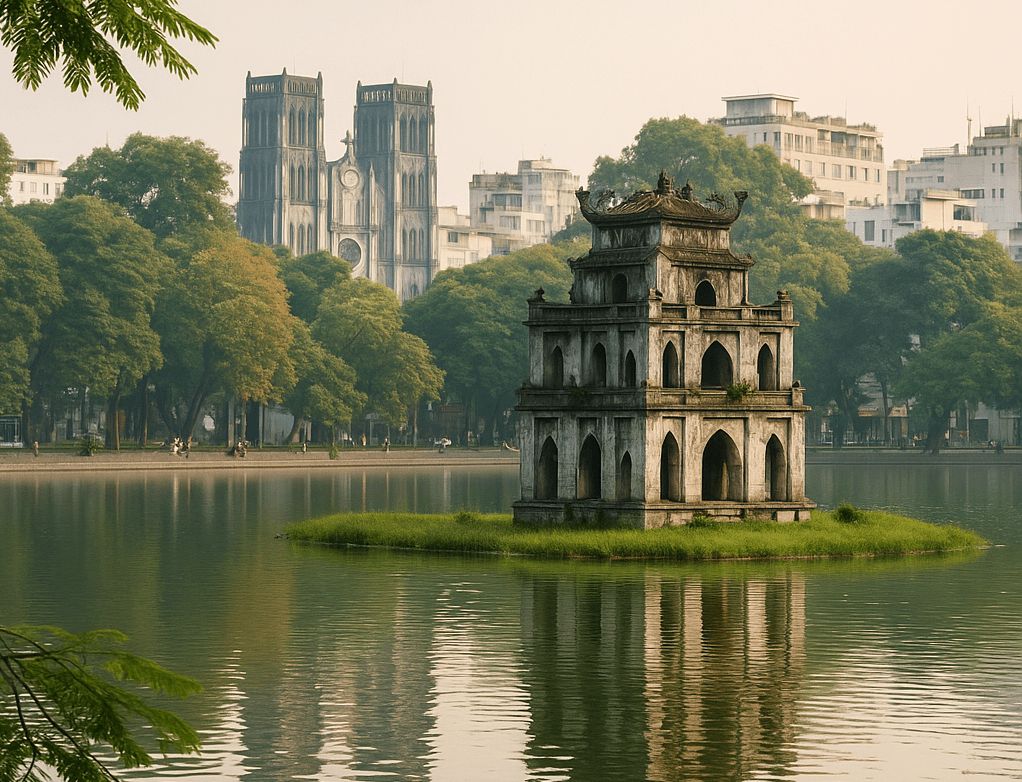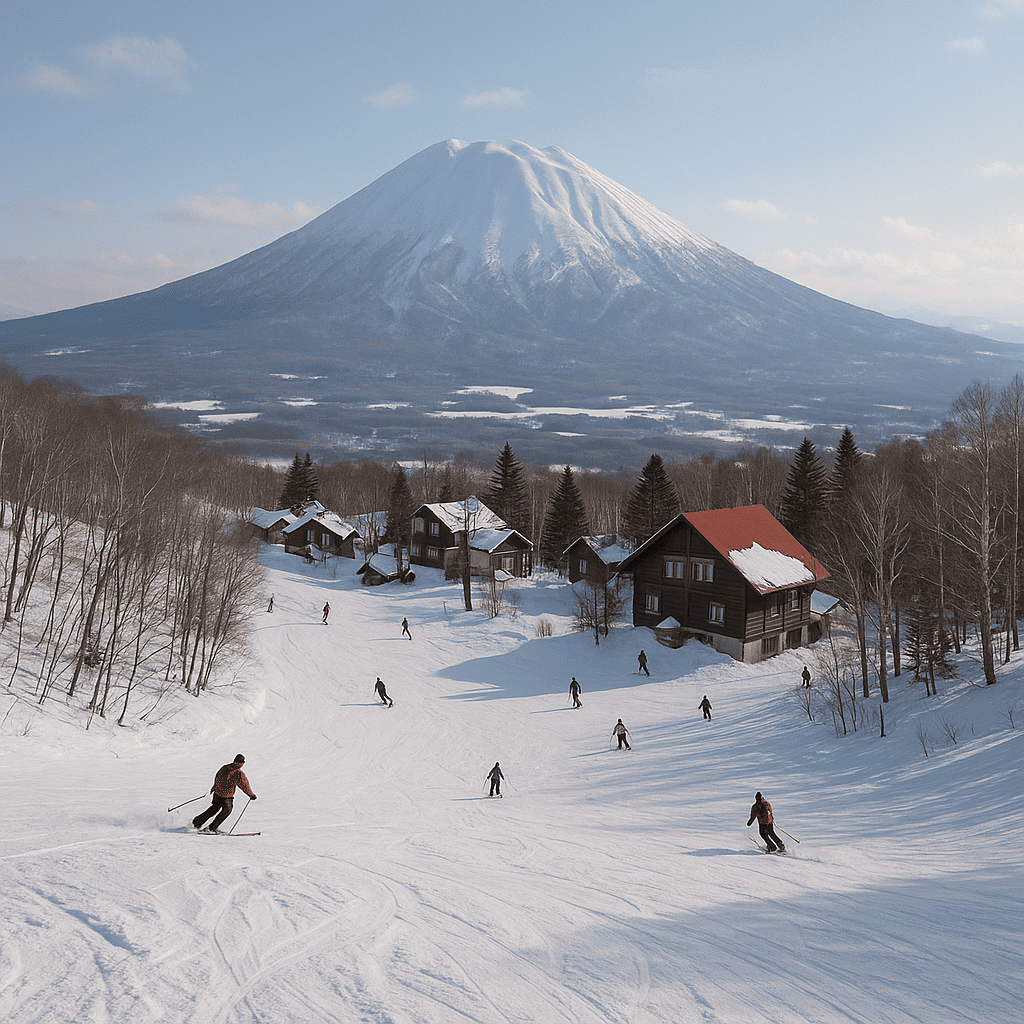
Often, when people mention South Korea, the first images that come to mind are Seoul’s bright lights, lively street food stalls, and historic temples. Yet tucked away, beyond well-trodden paths and shimmering cities, South Korea hides soaring peaks and breathtaking mountainscapes rarely acknowledged even by seasoned adventure bloggers. These hidden jewels present ideal playgrounds not only for experienced hikers but also for nature lovers craving fresh explorations off the beaten path. Whether you’re chasing panoramic views, chasing waterfalls, or yearning a quiet hike drenched in solitude, these lesser-known peaks will reward every adventurous spirit who dares venture beyond popular hiking trails. Let’s dive into eight astonishing mountains across South Korea that quietly await their turn in your travel itinerary—and each promises memories worth every dusty hiking boot and drop of sweat.
1. Ami Mountain – Sunrise Heaven Without the Crowds
Ami Mountain, located in Chungcheongnam-do, might not grace every travel magazine, but this peaceful summit wins hearts for its breathtaking sunrises. At only 630 meters in height, Ami Mountain provides hikers of all fitness levels with rewarding trails through lush forests and wildflower meadows. For sunrise seekers: start your hike early (around 4 am) from Ami-sa Temple to catch the magical sunrise illuminating surrounding peaks in layers of gold and crimson. Be sure to pack headlamps and a warm windbreaker. Afterward, take your time strolling down, enjoying tranquil temple gardens practically untouched by mass tourism.
2. Udusan Mountain – Finding Peace Above the Clouds
Head south to Gyeongsangnam-do, where Udusan Mountain quietly stands at around 1,046 meters, giving weary city dwellers fresh air, soothing tranquility, and starry skies free from urban glare. Its name meaning “Cow’s Head Mountain” hints at its intriguing shape. Locals praise Udusan as a sacred meditation site, with peaceful trails ascending through vibrant forests and the lovely Udusa Temple awaiting halfway. Tip: hike early in the morning to see valleys filled with swirling mist—it’s a stunning spectacle known affectionately as the “sea of clouds.” In autumn, the fiery palette of foliage makes the climb truly unforgettable.
3. Cheonwangbong Peak – King’s Summit Without Royal Crowds
While Jirisan is popular among hikers, many forget Cheonwangbong, its highest peak, at 1,915 meters. The strenuous climb reduces typical tourist traffic, making this summit delightfully crowd-free even during peak hiking seasons. Climb from Jungsan-ri village—it’s challenging but worth every step. Prepare layers of clothes; temperatures drop sharply near the summit. At the top, a small stone monument greets climbers with views stretching uninterrupted in every direction. A local saying translates loosely to, “You’ve not truly hiked in Korea unless you’ve touched Cheonwangbong.”
4. Mindungsan – The Bald Mountain with Shimmering Silver Grass
Located in Gangwon-do, Mindungsan (“Bald Mountain”) steals attention each fall when fields of wind-blown silver grass dramatically transform the mountain slopes into shimmering waves of brilliance. Standing at 1,119 meters, Mindungsan’s gentle paths are accessible even to beginner hikers. Aim for late September to early October when grass peaks in silvery glory. A cozy festival held annually at Mindungsan Station celebrates the spectacle with local food, traditional dances, and camaraderie. Pack snacks, water, and your camera—trust me, you’ll want many photos from this dreamlike landscape.
5. Gamaksan – Stunning Views Shaped by History
Overshadowed by popular mountains around the capital region, Gamaksan quietly delivers breath-stealing views of softly rolling mountains near Seoul. At 675 meters, it might not win medals in height, but history lovers will find the fortification sites dating from ancient Korean conflicts especially captivating. Trails here gently twist by tranquil temples, historic battle sites, and even waterfalls appearing suddenly from bluffs. Wearing sturdy shoes is essential; paths occasionally get rocky, adding adventure without extreme exertion. Start at Gamgol Village for easy parking and well-marked trails.
6. Nogo Mountain Peak – Wander Amid Pristine Wildflowers
Lost within the sprawling Taebaek mountain range hides Nogo Peak (1,507 meters)—truly South Korea’s secret botanical treasure trove. While Mount Taebaek draws visitors, hikers rarely explore Nogo Peak, offering miles of empty trails winding amid blooming wildflowers, untouched valley streams, and ancient pines. Best seasons are undoubtedly spring and summer, when flowers burst into vibrant colors, accompanied by gentle streams reflecting the azure skies above. Bring insect repellent and comfortable trekking boots—some trails can get muddy after rain—and enjoy unobstructed solitude in nature’s Eden.
7. Sambongsan – The Triple Peaks Adventure
Sambongsan means “Three Peaks Mountain,” named after its uniquely arranged trio of summits. Located in Chungju, its close placement sometimes tricks hikers into thinking it’s easy—beware; multiple climbs and descents offer delightful challenges. At under 1,000 meters, Sambongsan’s terrain packs surprising punch—with ropes and ladders aiding hikers at steeper segments. Practical tip: trekking gloves will greatly benefit your climb, given rope use. Once atop, stunning panoramic views over Chungju Lake reward every sore muscle, and descending hikers can relax lakeside, savoring locally famed Chungju apples.
8. Gariwangsan Peak – Snow Adventures and a Historical Ski Run
Few know the historical significance and beauty hiding within Gangwon Province’s Gariwangsan Peak (1,561 meters). When South Korea hosted the 2018 Winter Olympics, ski events temporarily crowned its slopes. Nowadays, Gariwangsan provides relatively untouched paths and pristine alpine views outside winter months. Hike during warmer months to experience lush forests, clear streams, and quiet trails mostly overlooked by tourists. During winter, adventurous skiers return here to trace footprints where Olympic athletes raced. If hiking winter trails, always equip yourself with crampons and warm layered clothing; safety first means enjoying your snowy venture fully.
Practical Tips to Enhance Your Hiking Adventure
Before you eagerly embark upon South Korea’s mesmerizing mountain trails, remember essential items ensuring hassle-free hiking trips. Carry enough drinking water—there’s rarely available potable water along secluded trails. Download maps or offline apps such as NAVER or Kakao Maps, as cell data reception may falter intermittently. Invest in quality hiking boots that grip trails securely, plenty of comfortable breathable clothing layers, rain gear, and crucial essentials including sunscreen and insect repellent. Small snacks, energy bars, or kimbap (Korean-style sushi) are perfect energy boosters. Lastly, always respect nature: leave no trash behind to keep these hidden peaks pristine for future adventurers.
Local Etiquette Insights
Locals deeply appreciate visitors respecting trail rules and etiquette. Greet fellow hikers warmly, either with a friendly nod, smile, or a cheerful “Annyeonghaseyo!” (Hello!). Share trails, giving way to ascending hikers, and keep noise respectful, especially near temples or meditation sites. Tidiness matters; leave no trace behind, and pick up misplaced litter if noticed. Lastly, appreciate local mountain customs; temples and spiritual sites command polite exploration, sometimes requesting shoes removal or headwear covered. Observing such courtesies ensures warm welcomes on your adventures.
Exploring forgotten peaks across South Korea offers rare opportunities—hidden surprises, beautiful panoramas, and unparalleled tranquility. By embracing these lesser-known mountains, avid explorers enrich their journeys immensely, uncovering authentic local history, culture, and nature’s pure wonders free from typical crowds. Now that you’ve discovered these secrets, the next step is straightforward: lace up your boots, fill up your backpack, and write your own unforgettable South Korean mountain stories—happy hiking!


